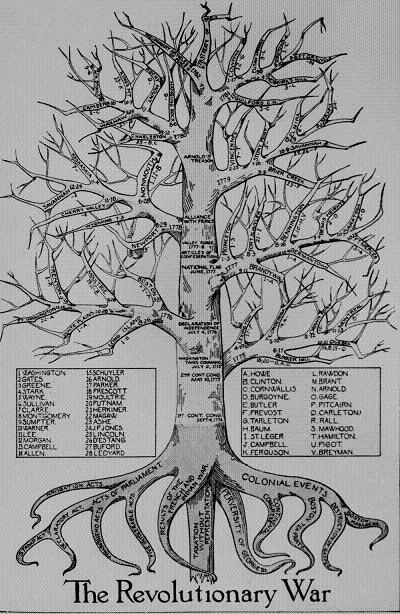Jefferson in Arabic
 This year a selection of Thomas Jefferson’s works was re-interpreted into Arabic for international publication. According to an announcement at Monticello.com, “The translation of selected works of Jefferson into Arabic was inspired by Professor Juan Cole at the University of Michigan who is a leading interpreter of the Middle East. Following the dramatic events of 9/11, Professor Cole was concerned about the lack of availability of classic writings about America in translation and purchasable in bookshops in the Middle East. He also stressed the importance of making such publications easily affordable in paperback. His aim was to foster greater understanding between the cultures of the Arabic world and the United States.”
This year a selection of Thomas Jefferson’s works was re-interpreted into Arabic for international publication. According to an announcement at Monticello.com, “The translation of selected works of Jefferson into Arabic was inspired by Professor Juan Cole at the University of Michigan who is a leading interpreter of the Middle East. Following the dramatic events of 9/11, Professor Cole was concerned about the lack of availability of classic writings about America in translation and purchasable in bookshops in the Middle East. He also stressed the importance of making such publications easily affordable in paperback. His aim was to foster greater understanding between the cultures of the Arabic world and the United States.”
According to Cole, “I am hopeful that the book will find an eager reception in Egypt, Tunisia and other countries yearning for democracy in the Arab world, and in a way, it could not have come out at a better time. Jefferson could be good for them to think with, a colleague from across the centuries and the Atlantic.” You can read the professor’s insights on the project over at Informed Comment, Thoughts on the Middle East, History, and Religion.
I think this is a marvelous idea and hope to see many more of our Founder’s writings translated into this dialect. In turn, I would also like to see more historical Arabic writings translated into English. Ignorance is the biggest cause of political strife in my opinion and nothing but good can come from sharing our nation’s history with other countries and cultures that have had little exposure to it. Maybe then they will better understand where we come from, and we in turn, can better grasp who they are.
Posted by ny5/pinstripepress
at 10:50 AM EDT
Updated: Thursday, 13 October 2011 10:53 AM EDT
Permalink |
Share This Post
Quite the fight
Click here for large image
Today I received an email from a curious reader who wanted to know how many battles took place during the Revolutionary War. The answer was a whole lot more than I expected. Some quick research revealed a list of 202 military actions (worthy of remembrance) from America’s fight for independence. I would be hard-pressed to name more than twenty without looking. Now that I have a compiled list I am shocked at how many engagements took place. It is a testament to the tenacity and fortitude of our ancestors and a sad commentary on the sheer level of death and destruction that was required to birth this nation. Perhaps I will post a more detailed table in the future that annotates which side was the victor.
1774
Powder Alarm – September 1, 1774
1775
Battles of Lexington and Concord – April 19, 1775
Siege of Boston – April 19, 1775 – March 17, 1776
Gunpowder Incident – April 20, 1775
Capture of Fort Ticonderoga – May 10, 1775
Battle of Chelsea Creek – May 27–28, 1775
Battle of Machias – June 11–12, 1775
Battle of Bunker Hill – June 17, 1775 (also known as the Battle of Breed's Hill)
Battle of Gloucester, MA – August 8, 1775
Shelling of Stonington – August 30, 1775
Siege of Fort St. Jean – September 17 – November 3, 1775 (also called St. John's)
Burning of Falmouth – October 18, 1775
Battle of Kemp's Landing – November 14, 1775
Battle of Great Bridge – December 9, 1775
Battle of Quebec – December 31, 1775
1776
Burning of Norfolk – January 1, 1776
Battle of Moore's Creek Bridge – February 27, 1776
Battle of the Rice Boats – March 2–3, 1776
Battle of Nassau – March 3–4, 1776
Fortification of Dorchester Heights – March 4, 1776
Battle of Saint-Pierre – March 25, 1776
Battle of Block Island – April 6, 1776
Battle of The Cedars – May 18–27, 1776
Battle of Trois-Rivières – June 8, 1776
Battle of Sullivan's Island – June 28, 1776
Battle of Long Island – August 27, 1776 (also known as the Battle of Brooklyn)
Landing at Kip's Bay – September 15, 1776
Battle of Harlem Heights – September 16, 1776
Battle of Valcour Island – October 11, 1776 (naval battle)
Battle of White Plains – October 28, 1776
Battle of Fort Cumberland – November 10–29, 1776
Battle of Fort Washington – November 16, 1776
Ambush of Geary – December 14, 1776
Battle of Iron Works Hill – December 22–23, 1776 (also known as the Battle of Mount Holly)
Battle of Trenton – December 26, 1776
1777
Second Battle of Trenton – January 2, 1777
Battle of Princeton – January 3, 1777
Battle of Millstone – January 20, 1777
Forage War – Winter 1777
Battle of Bound Brook – April 13, 1777
Battle of Ridgefield – April 27, 1777 (also known as the Danbury Raid)
Battle of Thomas Creek – May 17, 1777
Meigs Raid – May 24, 1777 (also known as the Battle of Sag Harbor)
Battle of Short Hills – June 26, 1777 (also known as the Battle of Metuchen Meetinghouse)
Siege of Fort Ticonderoga – July 5 – 6, 1777
Battle of Hubbardton – July 7, 1777
Battle of Fort Ann – July 8, 1777
Siege of Fort Stanwix – August 2 – 23, 1777
Battle of Oriskany – August 6, 1777
Second Battle of Machias – August 13 – 14, 1777
Battle of Bennington – August 16, 1777
Battle of Staten Island – August 22, 1777
Battle of Setauket – August 22, 1777
First Siege of Fort Henry – September, 1777
Battle of Cooch's Bridge – September 3, 1777
Battle of Brandywine – September 11, 1777
Battle of the Clouds – September 16, 1777
Battle of Saratoga I – September 19, 1777 (also known as the Battle of Freeman's Farm)
Battle of Paoli – September 21, 1777
Battle of Germantown – October 4, 1777
Battle of Forts Clinton and Montgomery – October 6, 1777
Battle of Saratoga II – October 7, 1777 (also known as the Battle of Bemis Heights)
Battle of Red Bank – October 22, 1777 (also known as the Battle of Fort Mercer)
Bombardment of Fort Mifflin – November 10 – 15, 1777
Battle of Gloucester, NJ – November 25, 1777
Battle of White Marsh – December 5–8, 1777
Battle of Matson's Ford – December 11, 1777
1778
Battle of Quinton's Bridge – March 18, 1778
North Channel Naval Duel – April 24, 1778
Battle of Crooked Billet – May 1, 1778
Battle of Barren Hill – May 20, 1778
Battle of Freetown – May 25, 1778
Battle of Monmouth – June 28, 1778
Battle of Alligator Bridge – June 30, 1778
Wyoming Massacre – July 3, 1778
First Battle of Ushant – July 27, 1778
Siege of Pondicherry – August 21 – October 19, 1778
Battle of Rhode Island – August 29, 1778 (also known as Battle of Newport or Quaker Hill)
Grey's raid – September 5–17, 1778
Siege of Boonesborough – September 7–18, 1778
Baylor Massacre – September 27, 1778
Battle of Chestnut Neck – October 6, 1778
Little Egg Harbor massacre – October 16, 1778
Carleton's Raid – October 24 – November 14, 1778
Cherry Valley Massacre – November 11, 1778
Battle of St. Lucia – December 15, 1778
Capture of Savannah – December 29, 1778
1779
Battle of Beaufort – February 3, 1779 (also known as the Battle of Port Royal Island)
Battle of Kettle Creek – February 14, 1779
Battle of Vincennes – February 23–25, 1779
Battle of Brier Creek – March 3, 1779
Battle of Chillicothe – May, 1779
Chesapeake raid – May 10–24, 1779
Armada of 1779 – June – September, 1779
Battle of Stono Ferry – June 20, 1779
Great Siege of Gibraltar – June 24, 1779 – February 7, 1783
Tryon's raid – July 5–14, 1779
Battle of Grenada – July 6, 1779
Battle of Stony Point – July 16, 1779
Penobscot Expedition – July 24 – August 29, 1779
Battle of Paulus Hook – August 19, 1779
Battle of Newtown – August 29, 1779
Capture of Fort Bute – September 7, 1779
Battle of Lake Pontchartrain – September 10, 1779
Siege of Savannah – September 16 – October 18, 1779
Battle of Baton Rouge – September 20–21, 1779
Battle of Flamborough Head – September 23, 1779
Battle of San Fernando de Omoa – October 16 – November 29, 1779
First Battle of Martinique – December 18, 1779
1780
Battle of Cape St. Vincent – January 16, 1780
Battle of Young's House – February 3, 1780
San Juan Expedition – March – November 1780
Battle of Fort Charlotte – March 2–14, 1780
Siege of Charleston – March 29 – May 12, 1780
Battle of Monck's Corner – April 14, 1780
Second Battle of Martinique – April 17, 1780
Battle of Lenud's Ferry – May 6, 1780
Bird's invasion of Kentucky – May 25 – August, 1780
Battle of St. Louis – May 25, 1780
Battle of Waxhaws – May 29, 1780
Battle of Connecticut Farms – June 7, 1780
Battle of Mobley's Meeting House – June 10?, 1780
Battle of Ramsour's Mill – June 20, 1780
Battle of Springfield, NJ – June 23, 1780
Huck's Defeat – July 12, 1780
Battle of Colson's Mill – July 21, 1780
Battle of Rocky Mount – August 1, 1780
Battle of Hanging Rock – August 6, 1780
Battle of Pekowee – August 8, 1780 (also known as the Battle of Piqua)
Battle of Camden – August 16, 1780
Battle of Fishing Creek – August 18, 1780
Battle of Musgrove Mill – August 18, 1780
Battle of Black Mingo – August 28, 1780
Battle of Wahab's Plantation – September 20, 1780
Battle of Charlotte – September 26, 1780
Battle of Kings Mountain – October 7, 1780
Royalton Raid – October 16, 1780
Battle of Klock's Field – October 19, 1780
La Balme's Defeat – November 5, 1780
Battle of Fishdam Ford – November 9, 1780
Battle of Blackstock's Farm – November 20, 1780
Battle of Fort St. George – November 23, 1780
1781
Battle of Jersey – January 6, 1781
Battle of Mobile – January 7, 1781
Battle of Cowpens – January 17, 1781
Battle of Cowan's Ford – February 1, 1781
Battle of Haw River – February 25, 1781
Battle of Wetzell's Mill – March 6, 1781
Battle of Pensacola – March 9 – May 8, 1781
Battle of Guilford Court House – March 15, 1781
Battle of Cape Henry – March 16, 1781
Siege of Fort Watson – April 15 – 23, 1781
Battle of Porto Praya – April 15, 1781
Battle of Blanford – April 25, 1781 (also known as the Battle of Petersburg)
Battle of Hobkirk's Hill – April 25, 1781 (also known as the Second Battle of Camden)
Battle of Fort Royal – April 29 or 30, 1781
Battle of Fort Motte – May 8–12, 1781
Siege of Augusta – May 22 – June 6, 1781
Siege of Ninety-Six – May 22 – June 19, 1781
Battle of Spencer's Ordinary – June 26, 1781
Francisco's Fight – July, 1781
Battle of Green Spring – July 6, 1781
Naval battle of Louisbourg – July 21, 1781
Battle of Dogger Bank – August 5, 1781
Invasion of Minorca – August 19, 1781 – February 5, 1782
Lochry's Defeat – August 24, 1781
Capture of USS Trumbull – August 29, 1781
Battle of the Chesapeake – September 5, 1781 (naval battle)
Battle of Groton Heights – September 6, 1781 (also known as the Battle of Fort Griswold)
Battle of Eutaw Springs – September 8, 1781
Battle of Lindley's Mill – September 13, 1781
Long Run Massacre – September 13, 1781
Siege of Yorktown – September 28 – October 17, 1781
Battle of Fort Slongo – October 3, 1781
Siege of Negapatam – October 21 – November 11, 1781
Battle of Johnstown – October 25, 1781
Second Battle of Ushant – December 12, 1781
1782
Capture of Trincomalee – January 11, 1782
Battle of St. Kitts – January 25–26, 1782
Battle of Sadras – February 17, 1782
Gnadenhütten massacre – March 8, 1782
Battle of Roatán – March 16, 1782
Battle of Little Mountain – March 22, 1782
Battle of Delaware Bay – April 8, 1782
Battle of the Saintes – April 9–12, 1782
Battle of Providien – April 12, 1782
Battle of the Black River – April 13 – August 23, 1782
Crawford expedition – May 25 – June 12, 1782
Naval battle off Halifax – May 28–29, 1782
Raid on Lunenburg – July 1, 1782
Battle of Negapatam – July 6, 1782
Battle of Piqua – August 8, 1782
Hudson Bay Expedition – August 8, 1782
Siege of Bryan Station – August 15–17, 1782
Battle of Blue Licks – August 19, 1782
Battle of the Combahee River – August 26, 1782
Battle of Trincomalee – August 25 – September 3, 1782
Siege of Fort Henry – September 11–13, 1782
Battle of Cape Spartel – October 20, 1782
1783
Action of 22 January 1783 – January 22, 1783
Battle of Cuddalore – June 20, 1783 (naval battle)
Siege of Cuddalore – June 7–25, 1783 (land siege)
The Seasonal Dilemma
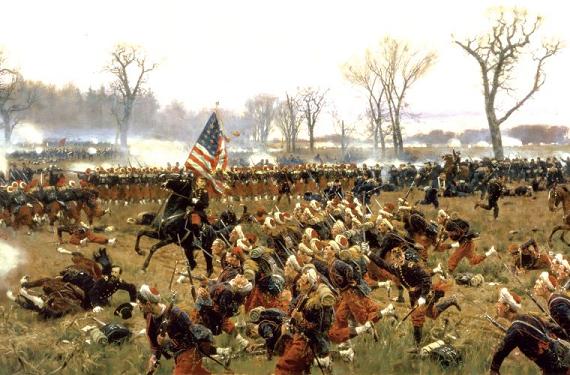
One of the more commonly overlooked challenges of Civil War battlefield interpretation is what I like to call “the seasonal dilemma.” This is the act of touring battlefields at a time of year that is vastly different than that of the actual engagement. The reality is that most folks travel to our nation’s hallowed grounds on their annual vacation or simply when they have the time. This means that they may be in Fredericksburg in the summer and Gettysburg in the fall. Perhaps they can only get to Antietam in the spring and Shiloh in the winter. None of these battles took place in those corresponding seasons. Although it is still entirely possible for them to have a rewarding visit, there is an obvious gap in the way that they will relate to the ground around them. Sometimes seasonal changes in the landscape, whether natural or manmade, literally transform the experience from one thing to another. Nowhere else (at least for me) is this more apparent than at the Slaughter Pen Farm on the Fredericksburg Battlefield (depicted above).
As a local resident, the SP Farm has been a regular part of my every day scenery for years. A few weeks ago, I did a prep-tour there for my new venture, All-Access Battlefield Tours. Our friend Clint Schemmer from The Free Lance-Star joined us in order to conduct an interview for an upcoming article. At the time (September), the corn fields that surrounded us were standing tall. This created an enormous wall of green vegetation that ran along the walking trail and shielded us from the public’s view. As we rolled along the backside of the corn field we were completely masked from anything visibly “modern.” I stopped for a moment and turned everyone completely around noting that the serenity of the view really gave us a sense of what it must have felt like before urban sprawl crept up on the farm’s boundaries. This isolation also obscured the NPS tabletop markers which ran along the trail.
Fast forward to last week (October) as colossal John Deere combines rolled over the corn fields and completely stripped them of all vegetation. As a result the SP Farm walking trail is fully visible from the main street and the sheer vastness of the site is quite apparent. Those NPS markers now seem to sit miles apart and the impressive acreage in which this significant part of the Battle of Fredericksburg took place can now be experienced in a visual manner that is much closer to the way it was in the winter of 1862. Unfortunately, those corn stalks provided a privacy that also enabled us to share that intimate moment of timelessness. For now the battlefield is “naked.” The corn will return next year as it always does.
As a tour guide I will be conducting trips to the Slaughter Pen Farm all year long so visitors will obviously experience the ground in both settings, with corn and without. This literal change in the landscape requires me to curtail my presentation to fit both settings, one that is enveloped by countless rows of feed corn and one in which travelers will see for miles across flattened fields. The story of what transpired there remains the same, but the use of visual references and descriptions will vary. Phrases like “picture if you will” and “if you were here in the winter of 1862” will likely become mainstays.
John Hennessy, Chief Historian/Chief of Interpretation at the Fredericksburg/Spotsylvania National Military Park was kind enough to share his own insights into this issue. He writes:
The problem is insurmountable. In December (Fredericksburg) and May (Chancellorsville, Wilderness and Spotsylvania) any crops present were either dead or just emerging, meaning that the crops themselves had little to do with the nature of the landscape. You can't sustain crops in a nascent state, and you can't maintain open fields without making them useful in some form--that is, plant a crop.
The limits of what we do entail being able to 1) match crops (because we cannot simply plant, for example, corn year after year without rotation), or 2) match the emergent nature of the crops. I think the highest goal we can achieve is simply to maintain the pattern of forest and field, putting the fields to productive use when we can.
There are some who object to, for example, the use of soybeans, because they historically were not present. But soybeans most closely match in the broad sense the sort of low growth that existed in May. I personally favor them for that reason. Certainly, head-high corn--no matter corn's presence on the fields of our battlefields--bears NO resemblance to what was there and, as you point out, works against the visitor in a big and tall way.
I am interested in how my readers who lead tours, both rangers and amateurs, deal with the immersion and explanation of battlefields according to the time of year they are there. Email your comments here and I will compile them for an upcoming post.
BONUS: Craig Swain over at To the Sound of the Guns has posted some excellent photos of the Slaughter Pen Farm in both seasonal settings. View Here
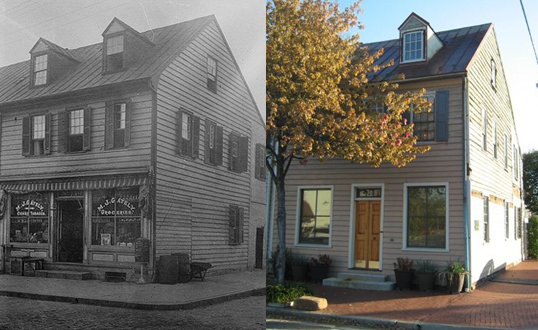

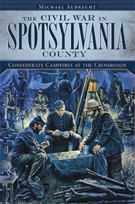




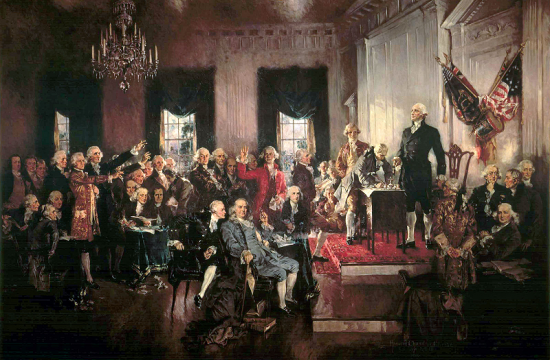
 This year a selection of Thomas Jefferson’s works was re-interpreted into Arabic for international publication. According to
This year a selection of Thomas Jefferson’s works was re-interpreted into Arabic for international publication. According to 